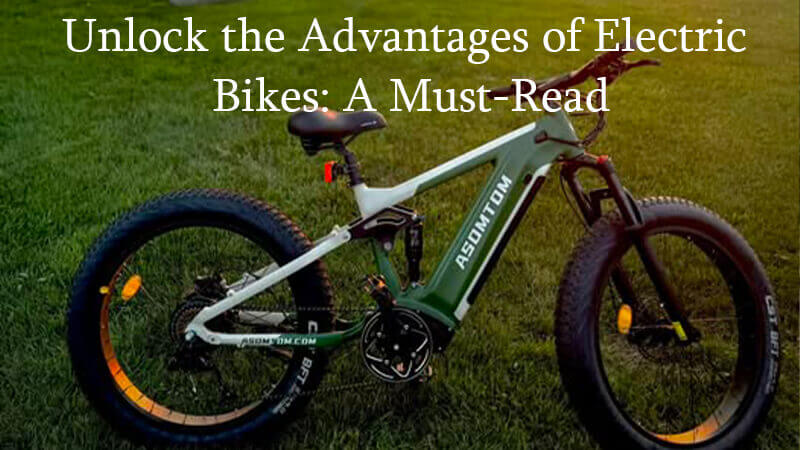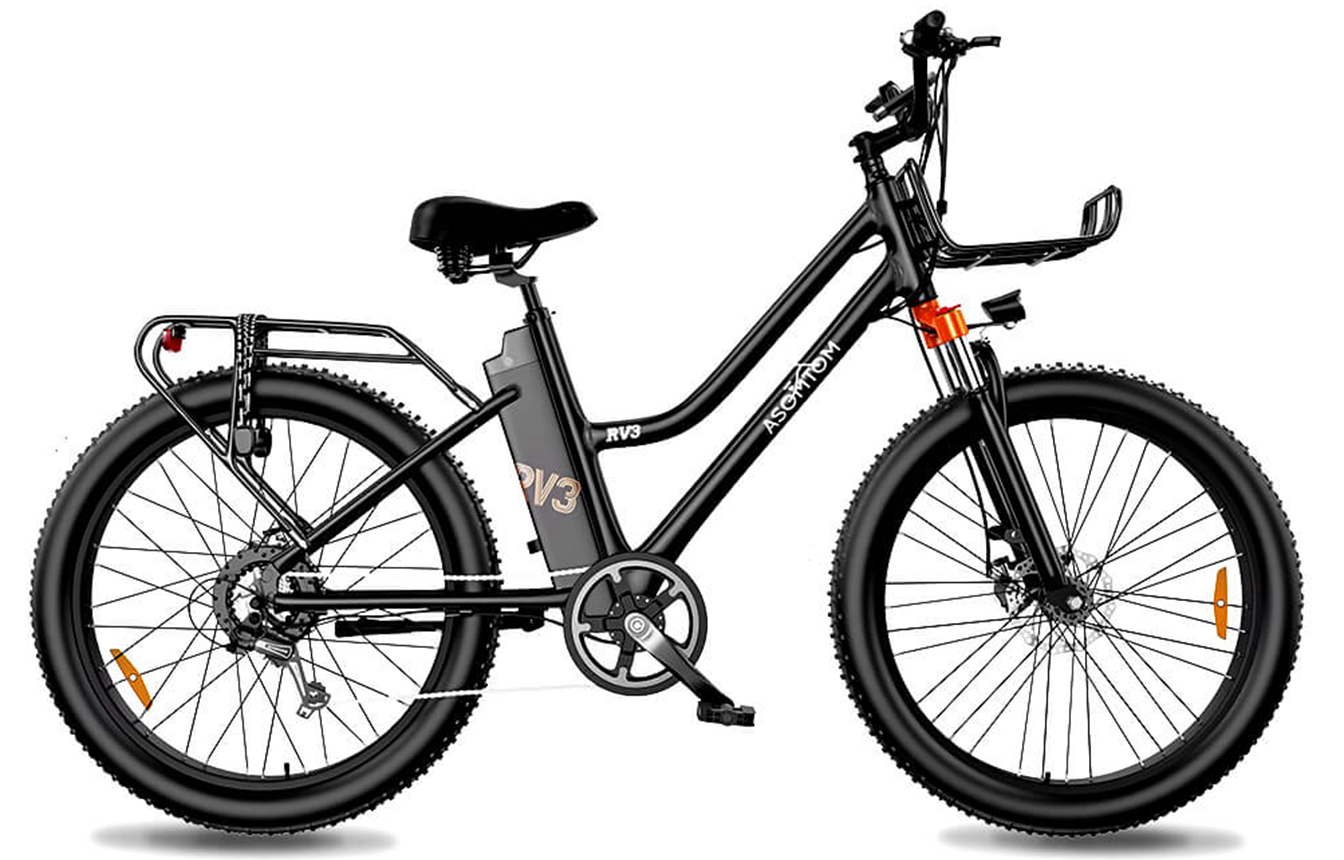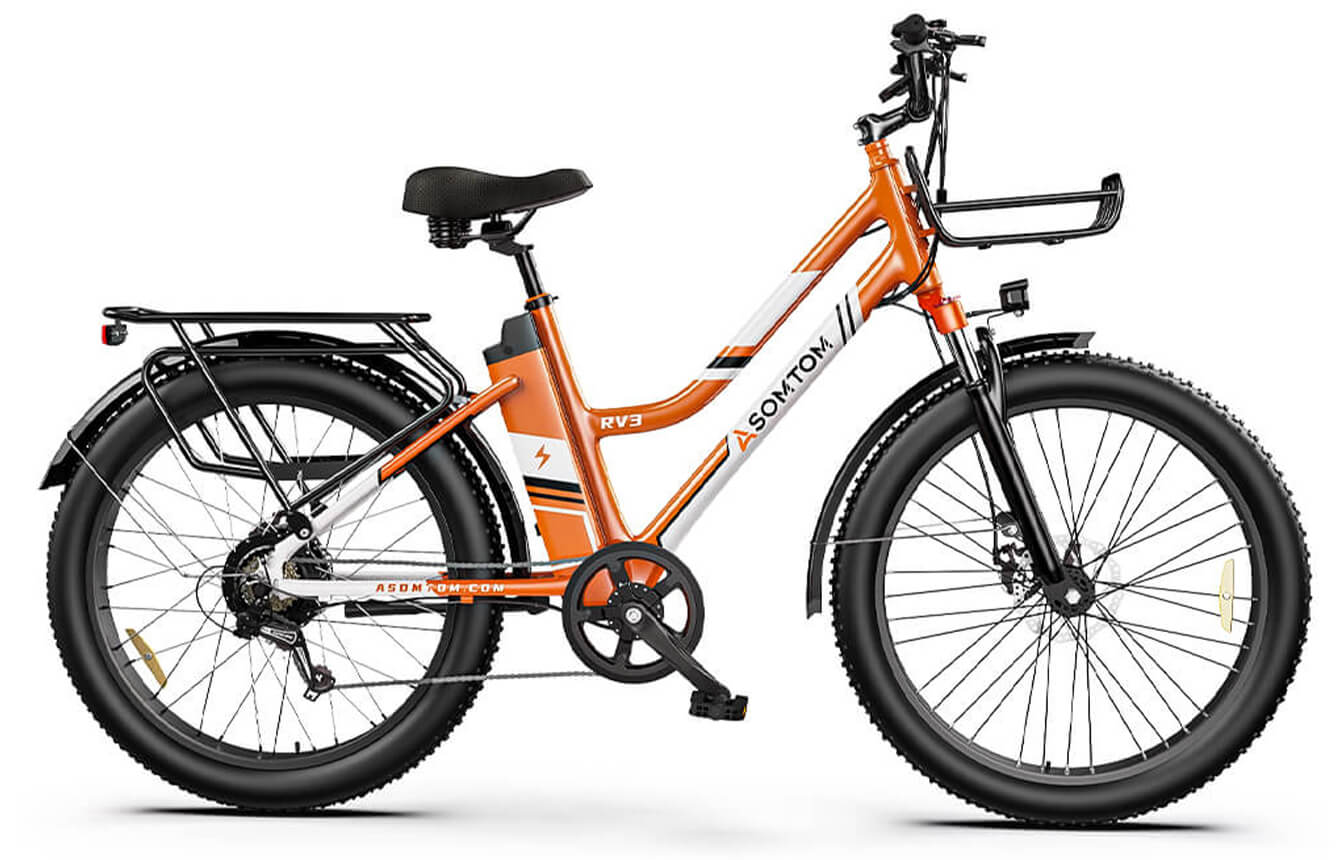Unlock the Advantages of Electric Bikes: A Must-Read

Electric bikes are changing how many Americans commute, run errands, and stay active. These machines pair pedal effort with a small motor so riders climb hills faster, cover longer routes, and keep pace with groups while still getting meaningful aerobic exercise.
Research and field tests show assisted cycling can raise heart rates close to traditional cycling, so health and fitness remain part of each trip. That mix of support and effort makes regular rides more likely for people who once avoided long or hilly routes.
This article will explain real-world gains: time saved in traffic, lower per-mile costs than a car, fresher arrivals, and inclusive use for seniors or those returning to activity. You’ll also get practical tips on choosing assist levels, staying safe in U.S. streets, and making trips more reliable for errands and small deliveries.
-
How assistance keeps exercise meaningful while reducing common barriers.
-
Practical wins for daily travel: time, cost, and comfort.
-
What research says about heart-rate and fitness outcomes.
Why Electric Bikes Are Worth It Today: The Big-Picture Benefits
Modern assisted two-wheelers let commuters trade slow, stop-and-go trips for faster, more reliable point-to-point travel. They shorten door-to-door times and make short shopping or transit-linked journeys simpler.
From fitness to finances: how e-bikes deliver daily value
Assist systems reduce perceived effort while keeping heart rates in useful ranges. That means more frequent cycling and steady weekly activity without longer workouts. Many users report rides feel easier and more enjoyable, yet still count as real exercise.
"People who switch short car trips to pedal-assist options often ride more days per week and cover greater distances."
-
Fitness gains from increased total cycling activity and better adherence to routines.
-
Cost savings when short car or transit trips are replaced by point-to-point rides.
-
Faster urban journeys door-to-door when traffic and parking are considered.
Who benefits most: commuters, recreational riders, and returning cyclists
Commuters enjoy predictable travel times and fewer parking hassles. Recreational cyclists explore farther with less fatigue. Returning riders and people new to cycling gain confidence through lower perceived effort.
Over months, this mix of convenience and fitness compounds into real health benefits and practical everyday value.
Electric Bike Benefits for Fitness and Heart Health

👉Read more about E-MTB
Assisted pedaling lets many people sustain a higher average intensity across longer rides. Multiple trials show that support does not eliminate training stress; it reshapes it so sessions are more consistent and doable.
Evidence-backed effort
A Brigham Young University study found seasoned mountain riders reached about 94% of their unassisted average heart rate on an e-MTB over a 10 km loop. Commuter data from the same group showed roughly 89% of mean beats per minute versus non-assisted trips.
"Tom Bell hit 198 bpm on an assisted mountain test, showing riders can still push to very high zones."
Sustainable intensity and lower perceived exertion
Assistance smooths spikes, so moderate-to-vigorous intensity lasts longer. That lowers perceived exertion and lets riders stack more sessions each week without burnout.
Muscles and whole-body work
-
Leg drive and cadence build endurance and power.
-
Core stability and upper-body control help with balance and steering.
-
The motor reduces peak strain but preserves meaningful effort in productive training levels.
Overall, studies and real-world testing show e-cycling improves cardiovascular markers and muscular coordination. For riders rebuilding fitness or aiming for steady progress, this approach delivers reliable physical activity and durable gains in health.
Mental Health Benefits: Less Stress, More Joy
Fresh-air movement and steady pacing combine to lower stress and boost daily happiness. Riding outdoors adds an extra mood lift that indoor workouts rarely match. Small, frequent trips can build a reliable routine that supports sleep and calm.
Outdoor movement for anxiety relief and better sleep
British Cycling notes that time spent cycling outside ties to reduced anxiety, lower stress, and better sleep quality. Researchers also find outdoor activity amplifies the mental returns of exercise versus indoor sessions.
Assisted mountain models show riders reach moderate-to-vigorous intensity while reporting low perceived exertion. That mismatch—real workout with less strain—likely eases stress and keeps people coming back.
“E-bike grin” effect: confidence, independence, and mood boosts
"Riders often describe pure joy and renewed confidence when they ride more often and farther with ease."
-
Outdoor rides reduce anxiety and improve sleep.
-
Lower perceived exertion eases stress while delivering exercise-related mood gains.
-
Greater independence and confidence help form lasting activity habits.
Inclusive by Design: E-Bikes for Seniors, New Riders, and Rehab

👉Read more about E-Trike
Adjustable support systems let people set effort to match their comfort and recovery needs. That control builds confidence and makes short routines feel manageable.
Adjustable assistance builds confidence and consistency
Researchers found that older adults (50–83) who rode assisted models three times weekly for eight weeks saw bigger cognitive and mental health gains than those on conventional cycles. The study links regular participation to better outcomes, not just raw intensity.
Support for arthritis, diabetes, and asthma
Modulating effort helps manage symptoms while keeping physical activity steady. Rehab plans can start with higher assistance and step down as fitness improves.
| User Group | Common Barrier | How an e-bike helps | Recommended approach |
|---|---|---|---|
| Older adults | Fear of fatigue or hills | Adjustable power reduces strain, boosts independence | Short, regular rides; moderate levels |
| Rehab / returning riders | Pain, limited endurance | Progressive loading supports safe progression | Start high, lower assistance over weeks |
| Inactive or overweight adults | Low confidence, inactivity | Consistent sessions increase adherence and fitness | Three 30-min sessions weekly |
Adaptive frames and upright geometry widen access and encourage social rides. Inclusivity here is a pathway to lasting health improvements.
Speed, Hills, and Traffic: Smoother, Safer Urban Riding
City riding feels steadier when a small motor helps you launch and keep pace at lights and junctions. Predictable acceleration reduces sudden effort spikes and makes merging into traffic easier. That steadiness suits busy streets and mixed traffic conditions.
Quick acceleration for junctions and lights
Motors assist from a stop so you can move smoothly through intersections. Faster starts cut awkward delays at junctions and lower the chance of being boxed in by cars.
Climbing made easier, so you ride farther with less strain
On hills, assistance reduces peak effort. Maintaining cadence and momentum means less muscular fatigue and longer trips become realistic for more riders.
U.S. assist realities: motor support typically up to 20 mph
Many systems in the United States provide support to about 20 mph. That range matches city speeds and helps you keep a steady pace without pushing intensity too high.
-
Pick assistance levels to control effort and preserve energy for the day.
-
Reduced surges lead to calmer, safer commutes and fewer sweat-heavy arrivals.
-
Smoother sections encourage swapping short car trips for routine cycling.
| Situation | Typical setting | Recommended approach | Outcome for riders |
|---|---|---|---|
| Stop-and-go junctions | Urban streets, lights | Moderate motor assist from launch | Smoother merges, predictable speed |
| Steep hills | City inclines, ramps | Higher assistance briefly; maintain cadence | Less fatigue, longer ride distance |
| Commuting in traffic | Mixed vehicle flow | Use lower levels once at speed | Consistent spacing, arrive fresher |
Go Farther with Every Ride: Range, Distance, and Exploration
When range anxiety fades, routes get bolder and rides get longer. Many riders find that steady support lets them plan day trips and scenic loops they once skipped.
Longer trips, greater consistency, stronger cardiovascular payoff
An analysis across seven European cities found assisted riders logged longer trips than non-assisted cyclists. The extra volume translated to similar fitness gains because total time in motion rose.
Longer but manageable sessions stack up. Over weeks, that consistency improves cardiovascular fitness more than occasional hard efforts.
Battery strategies: assistance levels and range-extending habits
Simple habits stretch range: use lower assistance on flats, bump it for climbs and headwinds, and save a boost for last-mile returns.
-
Maintain momentum over mixed terrain to increase weekly activity.
-
Add a second battery or range extender for longer day trips.
-
Ride consecutive days more comfortably thanks to moderated effort spikes.
-
Plan routes that mix scenic exploration with energy-safe return paths.
"Riders who trust their range explore more, ride more often, and gain steady fitness."
Commute Smarter: Time Savings, Cost Cuts, and Fewer Car Trips

👉Read more about City & Commuter Ebikes
For many urban workers, a pedal-assist commute trims delays and removes parking hassles. Short-to-medium journeys often become faster door-to-door than driving or using transit. That change shifts how people plan their mornings and evenings.
Beat congestion on short-to-medium urban journeys
Assisted cycling lets riders bypass slow traffic, use bike lanes, and shorten last-mile walks. The motor boost helps through lights and up hills so trips stay steady and predictable.
Lower per-mile costs than car and public transport
Charging and regular maintenance cost far less than car ownership. Over weeks and months, savings add up and can undercut many transit fares for routine commutes.
Arrive fresher: less sweat, less stress, more productivity
Reduced peak effort means you can pedal in work clothes for moderate distances and still arrive presentable. Riders report better focus and less pre-work anxiety after a calm commute.
-
Eliminates parking searches and parking fees.
-
Makes multi-stop errands efficient and integrated into daily routes.
-
Reduces total car journeys for many households, lowering costs and emissions.
| Mode | Typical door-to-door time | Per-mile running cost | Arrival condition |
|---|---|---|---|
| Car | Variable; often delayed by congestion | High (fuel, parking, insurance) | Often sweaty or stressed |
| Public transit | Predictable but can include long walks | Medium (fares, transfers) | May require extra walking or transfers |
| Assisted cycle | Often faster for short/medium trips | Low (charging, maintenance) | Fresher, ready for work |
Everyday Utility: Cargo, Errands, and Family Rides
Carrying groceries, kids, and small deliveries by cycle is now a practical choice for many families and local businesses. Practical cargo designs handle loads that once required a car, so short trips become faster and less stressful.
E-cargo capability for groceries, school runs, and small business deliveries
Modern cargo models move bulky items with stability and room for child seats, panniers, or large crates. Many shops and couriers now replace short van runs with these cycles to cut costs and noise.
The motor flattens hills when you're loaded, keeping trips predictable across varied terrain. Parents often find school drop-offs faster than driving at peak times and free of parking hassles.
Group rides made enjoyable across different fitness levels
Assistance helps people keep pace with faster companions so mixed-ability group rides stay social and relaxed. That makes family outings and weekend loops more inclusive.
-
Carry groceries and bulky items without needing a car.
-
Run a local delivery route with lower operating costs and less noise.
-
Bridge fitness gaps so friends and family ride together comfortably.
| Use | Typical load | Why it works |
|---|---|---|
| Grocery runs | Crates, bags | Stable platforms and secure cargo mounts |
| School runs | Kids + backpacks | Child seats and short, reliable trips |
| Local delivery | Parcels, food | Lower cost, quiet operation |
Cleaner, Quieter Transportation with Practical Perks
Choosing a compact, assisted ride for errands reduces local emissions and keeps neighborhoods peaceful. Those short trips often replace car segments, cutting tailpipe pollution and lowering street noise.
Zero tailpipe emissions and reduced noise pollution
These models produce no exhaust during use and are notably quiet. You’ll usually hear only a soft whirr when accelerating or climbing, which makes streets calmer for residents and safer for cyclists and pedestrians.
Small-space friendly: folding e-bikes and apartment living
Folding designs pack down for closets, under desks, or office storage. They do tend to be heavier than analog models, but the motor’s help and rolling carry options keep daily use practical.
The result is a simple way to add light-to-moderate physical activity into a busy schedule. Over time, habitual short journeys support better cardiovascular health, steadier blood pressure, and lower stress.
-
Replaces car trips with a cleaner way to move.
-
Quieter streets improve neighborhood quality of life.
-
Compact form factors fit tight living spaces and encourage regular activity.
Conclusion
Making routine journeys active transforms commuting time into useful, manageable workouts. Evidence shows assisted riders often hit 89–94% of traditional heart rate zones while feeling less exertion, so you get real fitness without extreme strain.
Assistance smooths tough sections, builds confidence, and helps people ride more days per week. That steady activity brings physical gains, better sleep, and noted mental health improvements in older and inactive groups.
Dial assistance and levels to match goals, ride with a group or solo, and treat short trips as repeatable exercise. In short, e-bikes make cycling a practical path to lasting health and more enjoyable rides across varied terrain and seasons.









Leave a comment